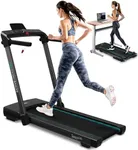Buying Guide for the Best Treadmills For Home
Choosing the right treadmill for your home can significantly impact your fitness journey. It's important to consider various factors to ensure you get a treadmill that meets your needs and fits well within your living space. Here are some key specifications to consider when selecting a treadmill for home use, along with explanations to help you make an informed decision.Motor PowerThe motor power of a treadmill is measured in horsepower (HP) and determines how smoothly and efficiently the treadmill operates. A higher HP is generally better for more intense workouts and heavier users. For walking and light jogging, a motor with 2.0 to 2.5 HP is sufficient. For regular running, look for a motor with at least 3.0 HP. If you plan to use the treadmill for intense running or if multiple users will be using it, consider a motor with 3.5 HP or higher.
Running SurfaceThe running surface, or belt size, is crucial for comfort and safety. A longer and wider belt provides more room to move and reduces the risk of stepping off the treadmill. For walking, a belt length of 50 inches is adequate, while runners should look for a belt length of at least 55 inches. Taller users or those with longer strides may need a belt length of 60 inches or more. The width should be at least 20 inches for a comfortable workout.
CushioningCushioning refers to the shock absorption system of the treadmill, which reduces the impact on your joints. Good cushioning is important for preventing injuries and providing a more comfortable workout experience. Treadmills with adjustable cushioning allow you to customize the level of shock absorption based on your preference. If you have joint issues or plan to use the treadmill frequently, look for models with advanced cushioning systems.
Incline and Decline SettingsIncline and decline settings allow you to simulate uphill and downhill running, adding variety to your workouts and targeting different muscle groups. Most treadmills offer incline settings up to 10-15%, while some advanced models also include decline settings. If you want to challenge yourself and enhance your cardio workouts, look for a treadmill with a wide range of incline and decline options. For basic fitness routines, a treadmill with a 10% incline should suffice.
Speed RangeThe speed range of a treadmill determines how fast you can go during your workouts. For walking, a maximum speed of 6-8 mph is sufficient. Joggers should look for a treadmill with a top speed of at least 10 mph, while serious runners may need a treadmill that can reach speeds of 12 mph or higher. Consider your fitness goals and current fitness level when choosing the appropriate speed range.
FoldabilityFoldability is an important feature for home treadmills, especially if you have limited space. A foldable treadmill can be easily stored away when not in use, freeing up valuable floor space. Look for treadmills with a hydraulic folding system for easy and safe folding and unfolding. If space is a major concern, prioritize compact and foldable models.
Console FeaturesThe console features of a treadmill include the display and controls for tracking your workout progress and accessing various programs. Basic consoles display speed, time, distance, and calories burned. More advanced consoles may include heart rate monitors, Bluetooth connectivity, and pre-set workout programs. Consider what features are important to you, such as the ability to sync with fitness apps or access virtual training sessions, to enhance your workout experience.
Weight CapacityThe weight capacity of a treadmill indicates the maximum user weight it can safely support. It's important to choose a treadmill with a weight capacity that exceeds your body weight to ensure durability and performance. Most home treadmills have a weight capacity ranging from 250 to 350 pounds. If multiple users with varying weights will be using the treadmill, opt for a model with a higher weight capacity.

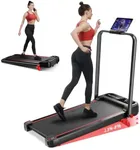
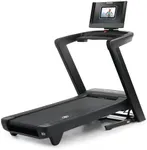

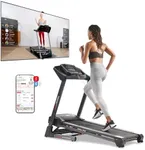
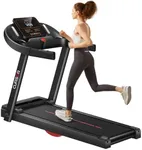


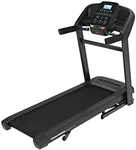

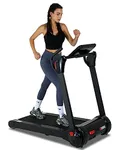

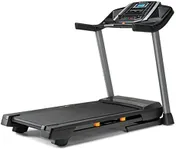
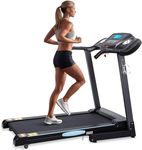
![SPORTY&FIT 4.0HP Folding Treadmill, [0.6-8.7 MPH] [Max 400LBS] [No Assembly] Electric Treadmill for Running Walking, Foldable Treadmill with LCD Monitor & Pulse Detection for Office Home Workout](https://images-proxy.bestreviews.guide/YVs3YXNXEXYubZ3g2XyajTCyuCo=/0x150/https://m.media-amazon.com/images/I/41vPxgvsvLL._AC_CX679_.jpg)
